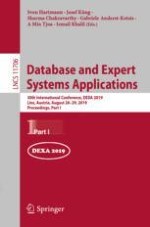2019 | OriginalPaper | Chapter
Semantic Oppositeness Embedding Using an Autoencoder-Based Learning Model
Authors : Nisansa de Silva, Dejing Dou
Published in: Database and Expert Systems Applications
Publisher: Springer International Publishing
Activate our intelligent search to find suitable subject content or patents.
Select sections of text to find matching patents with Artificial Intelligence. powered by
Select sections of text to find additional relevant content using AI-assisted search. powered by
